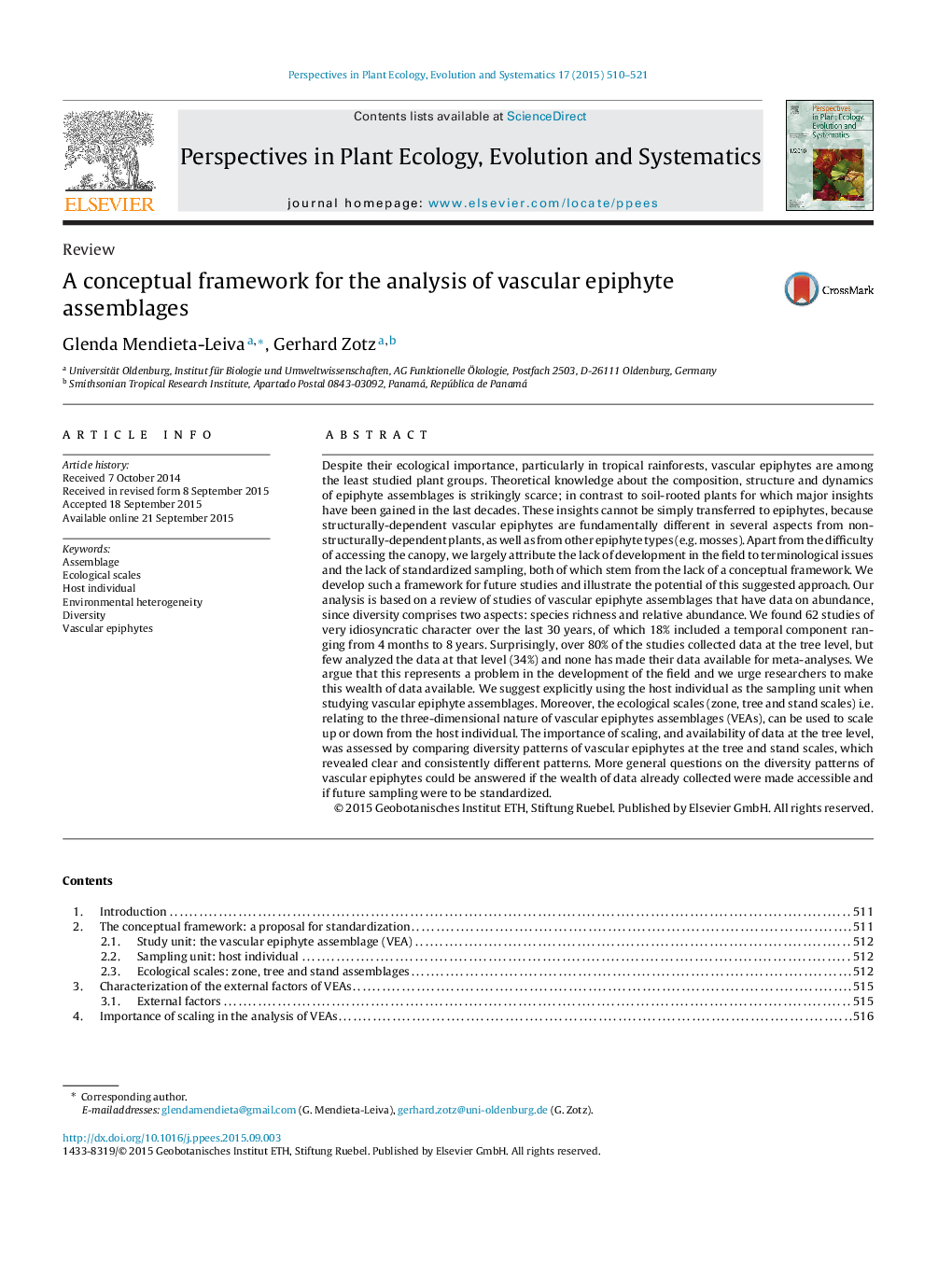| کد مقاله | کد نشریه | سال انتشار | مقاله انگلیسی | نسخه تمام متن |
|---|---|---|---|---|
| 4400949 | 1307036 | 2015 | 12 صفحه PDF | دانلود رایگان |
• A framework is proposed to study patterns and dynamics of epiphyte assemblages (VEAs).
• VEAs offer unique research opportunities due to their inherent structural hierarchy.
• To promote standardization, the core sampling unit should be the host individual.
• The host individual can be connected to lower and higher ecological and spatial scales.
• Data sharing is highlighted as essential for comparative meta-studies.
Despite their ecological importance, particularly in tropical rainforests, vascular epiphytes are among the least studied plant groups. Theoretical knowledge about the composition, structure and dynamics of epiphyte assemblages is strikingly scarce; in contrast to soil-rooted plants for which major insights have been gained in the last decades. These insights cannot be simply transferred to epiphytes, because structurally-dependent vascular epiphytes are fundamentally different in several aspects from non-structurally-dependent plants, as well as from other epiphyte types (e.g. mosses). Apart from the difficulty of accessing the canopy, we largely attribute the lack of development in the field to terminological issues and the lack of standardized sampling, both of which stem from the lack of a conceptual framework. We develop such a framework for future studies and illustrate the potential of this suggested approach. Our analysis is based on a review of studies of vascular epiphyte assemblages that have data on abundance, since diversity comprises two aspects: species richness and relative abundance. We found 62 studies of very idiosyncratic character over the last 30 years, of which 18% included a temporal component ranging from 4 months to 8 years. Surprisingly, over 80% of the studies collected data at the tree level, but few analyzed the data at that level (34%) and none has made their data available for meta-analyses. We argue that this represents a problem in the development of the field and we urge researchers to make this wealth of data available. We suggest explicitly using the host individual as the sampling unit when studying vascular epiphyte assemblages. Moreover, the ecological scales (zone, tree and stand scales) i.e. relating to the three-dimensional nature of vascular epiphytes assemblages (VEAs), can be used to scale up or down from the host individual. The importance of scaling, and availability of data at the tree level, was assessed by comparing diversity patterns of vascular epiphytes at the tree and stand scales, which revealed clear and consistently different patterns. More general questions on the diversity patterns of vascular epiphytes could be answered if the wealth of data already collected were made accessible and if future sampling were to be standardized.
Journal: Perspectives in Plant Ecology, Evolution and Systematics - Volume 17, Issue 6, December 2015, Pages 510–521
